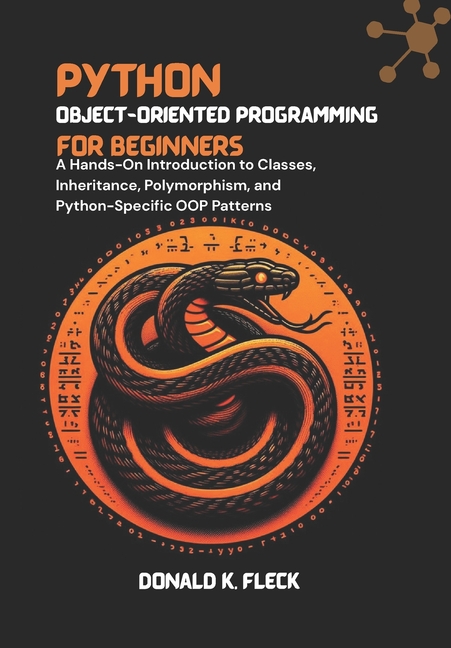Description
Kickstart your journey into Python's OOP world with this hands-on introduction. You'll learn to think in objects, structure code for clarity, and apply foundational patterns, building the confidence to tackle real projects from day one.
What You'll Learn
- Design and instantiate classes, attributes, and methods
- Apply encapsulation with properties and private members
- Model "is-a" and "has-a" relationships using inheritance and composition
- Leverage polymorphism via duck typing, abstract base classes, and interfaces
- Use mix-ins, decorators, and context managers to extend behavior
- Work with data containers: namedtuple, dataclass, and attrs
- Overload operators for intuitive, domain-specific APIs
- Write reusable utilities: logging, timing, and plugin architectures
- Build a BankAccount system with deposits, withdrawals, and statements
- Create a Shape hierarchy that computes area and perimeter generically
- Assemble a Library app managing Book and Member components
- Develop a Plugin framework using abstract handlers and a registry metaclass
- Implement LoggingMixin and TimingMixin without touching original code
- Step-by-step examples with clear, annotated code snippets
- Practical exercises at the end of each chapter to reinforce concepts
- Visual UML diagrams and flowcharts for class relationships
- Anti-Pattern Alerts highlighting common pitfalls
- Tips on when to favor composition over inheritance
- Guidance on writing unit tests for OOP designs
- Python developers transitioning from scripts to structured applications
- Beginners seeking a solid grasp of OOP fundamentals
- Students and self-learners wanting guided, practical examples
- Anyone aiming to write maintainable, scalable Python code
- No prior OOP experience required, every concept is introduced from scratch
Last updated on
Product Details
- Jul 8, 2025 Pub Date:
- 9798291720479 ISBN-10:
- 9798291720479 ISBN-13:
- English Language




